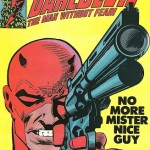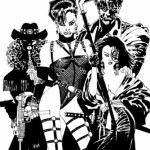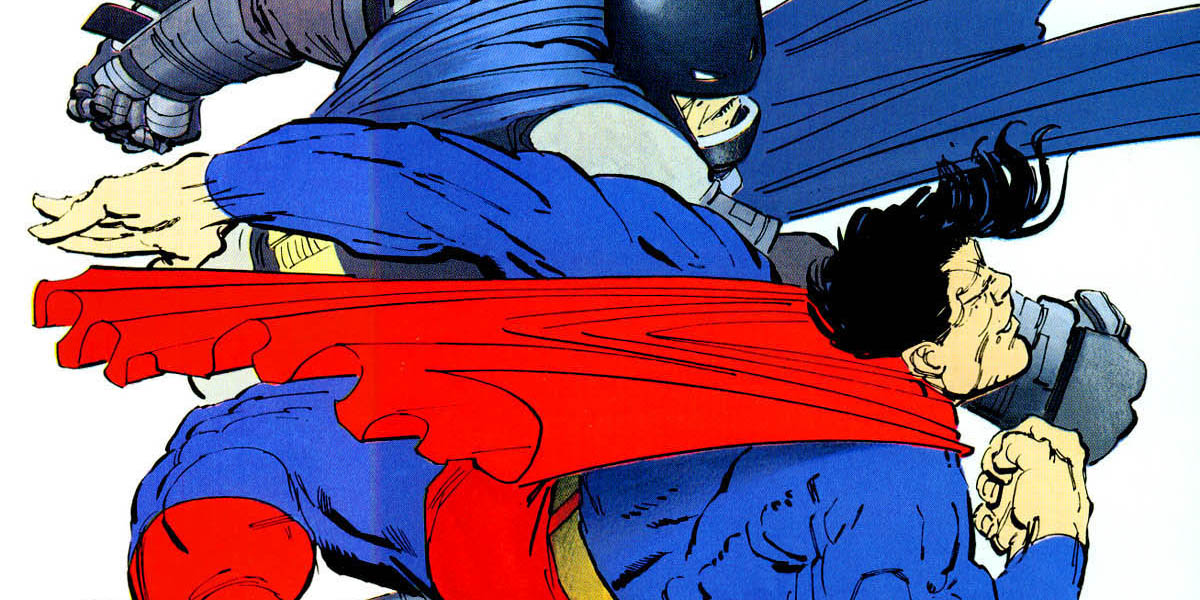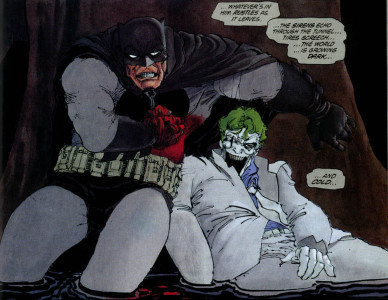Why do all the geniuses that we revere seem to go too far?
From time immemorial, many of the so called great minds that sparked change in a particular field were also known to have shall we say extremist viewpoints, no matter what culture or civilization, i.e. the great Physicist Einstein was an incestuous pervert. Frank Miller is no pervert, at least I wouldn’t know if he was, but he is arguably one of our modern examples of a genius that has a tendency to go too far; whether it is in his work or in an interview about politics, i.e. Occupy New York.
But don’t take my word for it, even his colleague Alan Moore, creator of Watchmen and V for Vendetta, has taken shots at Miller for his extremist viewpoints. In an interview with Honest Publishing back in 2011, Moore publicly called out Frank Miller after he made disturbing comments on his website about the Occupy New York protestors—namely calling them thieves, rapists and an unruly mob to name a few. Moore also when on to call out his colleague for disturbing themes he found in his work: misogyny in Sin City and homophobia in 300.
Though Moore made those comments back in 2011 about Miller, if you look at Miller’s work since then, it would then become apparent that his work has continued down a similar path; leading one to assume two things. One, Frank Miller doesn’t care that people perceive his work as misogynistic and secondly, he really may be misogynistic. Still, his work remains some of the most revered in the business, both past and present.
Daredevil
 It all started in the early 80s when Frank Miller first lobbied for and then turned the fledgling Daredevil comic book series into a must read. As head writer, he brought a fresh perspective to the comic as well as introduced new characters that were well received; ultimately making Daredevil a top tier character for Marvel. There was no denying that his take on the Daredevil sparked both intrigue and controversy, for good reason. Miller had essentially turned “the sightless swashbuckler” into an antihero.
It all started in the early 80s when Frank Miller first lobbied for and then turned the fledgling Daredevil comic book series into a must read. As head writer, he brought a fresh perspective to the comic as well as introduced new characters that were well received; ultimately making Daredevil a top tier character for Marvel. There was no denying that his take on the Daredevil sparked both intrigue and controversy, for good reason. Miller had essentially turned “the sightless swashbuckler” into an antihero.
When Miller started writing Daredevil story lines, many of the changes from the original storyline written by his predecessor Roger McKenzie, were darkened significantly. Most notably, Miller made Matt Murdock’s/Daredevil father a physically abusive drunkard in comparison to the loving characterization that McKenzie had previously envisioned and introduced ninjas into the storyline, harkening to his own influence of Japanese Manga. Miller also created Elektra, Murdock’s former flame turned assassin, who was violently killed with her own sai by Daredevil nemesis Bullseye in what has been referred to as sexual. Miller himself even referred to Elektra’s death as “a rape murder in a superhero comic.” The disturbed genius mind of Miller was just getting started.
Batman
In the late 80s, Frank Miller got his chance to leave an imprint of the comic book favorite Batman. In one of his most famed works Batman: The Dark Knight Returns, Miller re-imagined Batman as a 55 year old man who abandons retirement to return to a life of fighting crime in the violent streets of Gotham. Conceptually, it was one of the biggest game-changers in comic books to date. Not only did Miller boast of breaking up the friendship between Batman and Superman, but he also made Batman darker and grittier. Once again, fans new and old, liked Miller’s work. Not long after his final major story Batman: Year One, his colleagues—including Alan Moore—along with DC comics discussed a rating system for comics; prompting the radical writer to jump ship and seek out independent publishing companies who had no such restrictions for his apparent extremist views.
Sin City
 In the 90s, Frank Miller had not only distanced himself from creative constraints of the big publishing companies, but he had also returned to his original roots of crime comics with his own personal project: Sin City. Originally released under the Dark Horse Comics imprint in 1991, Sin City could arguably be considered his most extreme story to date. Often criticized, the Sin City stories feature some of the most disturbing images of women in comics; generating much discussion over Miller’s potential misogynistic views.
In the 90s, Frank Miller had not only distanced himself from creative constraints of the big publishing companies, but he had also returned to his original roots of crime comics with his own personal project: Sin City. Originally released under the Dark Horse Comics imprint in 1991, Sin City could arguably be considered his most extreme story to date. Often criticized, the Sin City stories feature some of the most disturbing images of women in comics; generating much discussion over Miller’s potential misogynistic views.
As the Sin City comics grew in popularity, and eventually were made into feature films, many fans and critics began to scrutinize Frank Miller’s work, particularly for his portrayal of women. Namely, Miller was criticized for either portraying women as victims, whores or schemers; all of which are always under the thumb of a male no matter how supposedly smart or experienced they may be. Despite this, Frank Miller’s work is still revered by comic book fans, so even if he does perpetuate disturbing themes in his work, people apparently like it or they wouldn’t buy it.


